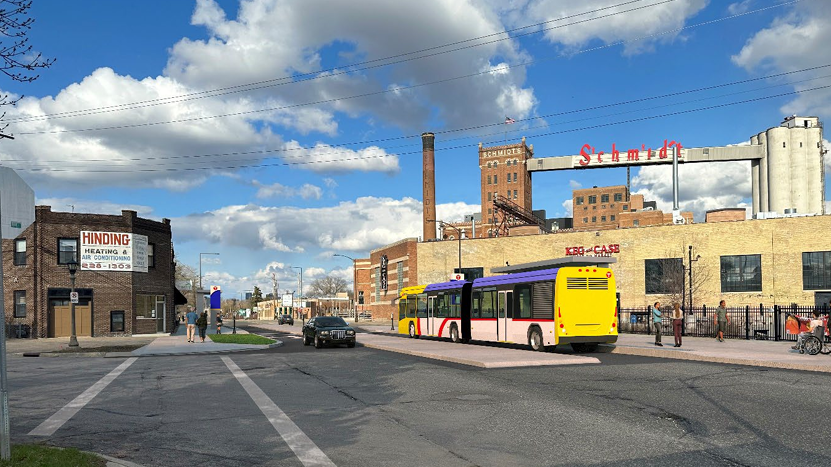Notebook Recollections
I have a beautiful 6×6 inch square Ancker Hospital tile. 100 years old, easy. Given to me by a patient who found it in Crosby Park.
Hello? The Nature Center?
Let’s remember where Ancker Hospital was. Think McDonald’s at Jefferson and West 7th. Cross 7th and continue down Jefferson two blocks and you see the St. Paul School Headquarters and Bridgeview School. That was Ancker.
Ancker closed in 1965. It was knocked down in 1967 and hauled in pieces and buried on the edge of what became Crosby Nature Center. An earthen berm originally covered the burial site. Now, 56 years later, it’s unrecognizable, smack dab in the middle of a healthy, deciduous forest.
Ancker Hospital was St. Paul‘s “City Hospital.” Started in 1874 in the donated mansion of Dr. Jacob B. Stewart (Civil War hero, Stewart Avenue). It was built for the poor and various lost souls of the city. In 1883 the famed and feared Dr. Arthur B Ancker took over as hospital superintendent. He was city hospital 24/7 for the next 46 years.
He and his wife lived at the hospital in one wing of the nurses residence initially and then the “supervising physician‘s house” on campus. Ancker would go on to establish emergency services and highly regarded public health sanitary practices as the standard for “city” hospitals and “general” hospitals throughout the Midwest.
City Hospital became a bastion of public health, injury care and infection management. Equally as important, it was a sought after training center for physicians and nurses. Rotating faculty were recruited from the University of Minnesota, well respected surrounding hospitals and private practices.
Dr Ancker designed City Hospital ‘s triple-brick-wall contagion building in 1883. Scarlet fever, diphtheria, smallpox and TB were the scourges of the land. So much TB that contagion became the TB building through the 1960s with a stint in the 1950s as a polio ward.
Arthur B Ancker MD died in his office at city hospital on November 2, 1923. They say he had just vigorously balled out two surgical residents for not properly washing-in for surgery that day.
The entire nursing staff in winged caps and Navy capes marched with the medical staff funeral procession for Dr. Ancker.
St. Paul city hospital officially became Ancker hospital.
West Seventhers would say that you went to Ancker if you were injured, infected or poor. But in actuality, everybody went there for automobile accidents or terrible infections.
Ancker Hospital’s footprint followed the national general hospital trend of the early 20th century. Separate buildings joined by tunnels to keep the illnesses apart from each other. Laundry was separate from the morgue. Hospital emergency and receiving wards were isolated from the morgue and laundry and of course were all distanced from contagion.
Contagion was the finest designed building of all. Triple layers of brick and a 2 foot internal wall of concrete. It took a full three weeks to knock it down in 1967 when the hospital was caput. All the other buildings tumbled in a day or two.
After TB and Polio were conquered in the late 1950s, most contagion wards or buildings became psychiatric departments. No germs, noxious vapors or evil spirit were going to get out of Ancker contagion.
In the mid-1990s I handed my Ancker tile to Gerry Lauer after a clinic visit without saying a word.
“Ancker Hospital,“ Gerry said. “I don’t know exactly where, maybe emergency receiving or main wards, but it’s Ancker.”
Gerry walked all of Ancker as a city electric inspector from 1952 until close in 1965. Then he made rounds at the deserted hospital to “count the cockroaches and rats” he said. “I looked at a lot of tiled hallways.”
His wife Marcella grew up behind Ancker. She worked on the TB ward Kitchen from eighth grade at St. Francis until she graduated Monroe high school. Sometimes she subbed in the old Ancker laundry. She never liked it. It was hot and noisy. No natural light.
But that wasn’t all. The dead were guernied through the laundry on their way to the morgue. The children were particularly hard. A dear, tall, stately white-haired African American orderly brought the babies. They were completely swathed in blue hospital linen. He carried them against his chest, white hospital shirts and trousers. His big arms crossed over their little bodies in an X. He looked straight ahead, like he was walking down the main aisle of the cathedral at high mass.
The laundry went silent whenever he passed, Marcella said.
In the 1960s, Ancker Hospital was looking anemic and bedraggled. The spirit and expertise was still there, but not the spit-shine.
Ancker moved on October 13, 1965 in furniture vans and railroad flatbeds to a new site closer to downtown St. Paul. It became Saint Paul Ramsey hospital overnight. No ceremony of remembrance for Arthure B.Ancker or his Hospital.
My tile sat on my clinic desk for three decades until my retirement in 2020. It was a testament to all things Ancker. All the life, death, birth there. The medical learning, caring, curing. The sorrow and fears and losses. The cured, cares and relief.
I touch it at the start of most every clinic day to guardian angel me through the patient day ahead.








Leave a Reply